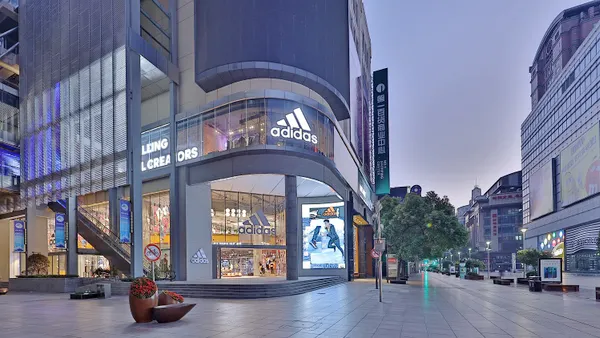Dive Brief:
-
The prospect of revamping malls in order to meet the evolving needs of today’s shopper is being complicated by the severe terms landlords face in getting financing, The Wall Street Journal reports.
-
With at least a perception of increased risk when it comes to retail, landlords and developers seeking loans face higher interest rates and more detailed assessments of their tenants, and terms are more conservative, according to the report.
-
Stronger malls have an easier time, but a shopping center’s prospects can swiftly turn once tenants, especially anchor tenants, shutter. The average retail real estate loan was $8.3 million in 2016, a decline from 2015’s $12.2 million, according to research from Real Capital Analytics cited by the Journal.
Dive Insight:
The economy has steadily gained steam since the Great Recession, but a lot of retail commercial real estate still looks like what consumers went through at that time — when homeowners found their mortgage debt outpacing their homes’ value. Financing for these malls is also becoming more difficult because landlords have fewer options than they did a decade ago. In some cases, their plans to upgrade their properties are being blocked by anchor tenants, which often have clauses in their leases that allow them to exercise some muscle over parking spaces and other issues.
The trouble comes as malls below the top tier are being squeezed by a retail environment that includes falling store traffic, changing consumer tastes and rising e-commerce sales. Green Street Advisors last year suggested department stores will have to close hundreds of additional locations in order to recapture previous levels of productivity — something that could decimate malls.
That would bring the number of malls closer to what they should be, according to separate analysis from retail analyst Jan Kniffen, who last year said that there are some 1,100 enclosed malls in the U.S., but that the number should be closer to 700.
While the Great Recession halted much of the unsustainable expansion of retail space that has steadily diluted retailers’ sales per square foot averages, the U.S. remains overstored. In a recent report, CoStar Group contends that nearly 1 billion square feet of U.S. store space must go by closing stores, converting retail space for other uses or reducing rents.
"Simply put, it all comes down to productivity," Suzanne Mulvee, director of U.S. research, retail for CoStar Portfolio Strategy, said in the report. "Retailers on average are generating fewer sales per square foot than they did during the decade leading up to the recession."
But not all malls are struggling. Simon Property Group last spring burnished its full-year forecast last year, beating expectations, leading CEO David Simon to push back against the widely-held notion that American malls are dying. He also dismissed the threat posed by e-commerce, saying “The Internet is not the panacea.” In fact, a group of mall landlords including Simon saved teen apparel retailer Aeropostale last year, preserving some 400 stores that would otherwise have been liquidated.
The current retail environment calls for a different paradigm. In the age of omnichannel, mall landlords may need to find new ways of calculating their centers’ and their tenants’ productivity — as should their tenants, said Hongwei Liu, co-founder and CEO of wayfinding technology firm Mappedin. “Traffic as we all know is only going in one direction, but revenue is going up,” Liu told Retail Dive, noting the value of traditional store and mall metrics is “breaking down because of accounting, not because of Amazon. When the customer wants red jeans instead of blue, and comes in and tries them on the store and orders the red — you know that your store created that value. That’s where productivity is."













